Solar Adaptive Optics
- PMID: 27194964
- PMCID: PMC4841189
- DOI: 10.12942/lrsp-2011-2
Solar Adaptive Optics
Abstract
Adaptive optics (AO) has become an indispensable tool at ground-based solar telescopes. AO enables the ground-based observer to overcome the adverse effects of atmospheric seeing and obtain diffraction limited observations. Over the last decade adaptive optics systems have been deployed at major ground-based solar telescopes and revitalized ground-based solar astronomy. The relatively small aperture of solar telescopes and the bright source make solar AO possible for visible wavelengths where the majority of solar observations are still performed. Solar AO systems enable diffraction limited observations of the Sun for a significant fraction of the available observing time at ground-based solar telescopes, which often have a larger aperture than equivalent space based observatories, such as HINODE. New ground breaking scientific results have been achieved with solar adaptive optics and this trend continues. New large aperture telescopes are currently being deployed or are under construction. With the aid of solar AO these telescopes will obtain observations of the highly structured and dynamic solar atmosphere with unprecedented resolution. This paper reviews solar adaptive optics techniques and summarizes the recent progress in the field of solar adaptive optics. An outlook to future solar AO developments, including a discussion of Multi-Conjugate AO (MCAO) and Ground-Layer AO (GLAO) will be given.
Electronic supplementary material: Supplementary material is available for this article at 10.12942/lrsp-2011-2.
Figures

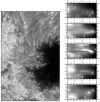












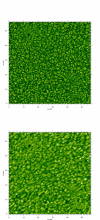











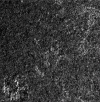


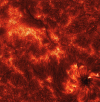
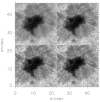

















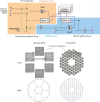

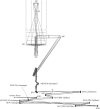





Similar articles
-
Bringing the visible universe into focus with Robo-AO.J Vis Exp. 2013 Feb 12;(72):50021. doi: 10.3791/50021. J Vis Exp. 2013. PMID: 23426078 Free PMC article.
-
Recent advances in astronomical adaptive optics.Appl Opt. 2010 Jun 1;49(16):D17-29. doi: 10.1364/AO.49.000D17. Appl Opt. 2010. PMID: 20517357
-
Optical transfer functions derived from solar adaptive optics system data.Appl Opt. 2010 Apr 1;49(10):1818-25. doi: 10.1364/AO.49.001818. Appl Opt. 2010. PMID: 20357864
-
Subaru Telescope -History, active/adaptive optics, instruments, and scientific achievements.Proc Jpn Acad Ser B Phys Biol Sci. 2021;97(7):337-370. doi: 10.2183/pjab.97.019. Proc Jpn Acad Ser B Phys Biol Sci. 2021. PMID: 34380914 Free PMC article. Review.
-
Review of adaptive optics OCT (AO-OCT): principles and applications for retinal imaging [Invited].Biomed Opt Express. 2017 Apr 19;8(5):2536-2562. doi: 10.1364/BOE.8.002536. eCollection 2017 May 1. Biomed Opt Express. 2017. PMID: 28663890 Free PMC article. Review.
Cited by
-
A deep learning framework for instrument-to-instrument translation of solar observation data.Nat Commun. 2025 Apr 2;16(1):3157. doi: 10.1038/s41467-025-58391-4. Nat Commun. 2025. PMID: 40175360 Free PMC article.
-
Observations of fine coronal structures with high-order solar adaptive optics.Nat Astron. 2025;9(8):1148-1157. doi: 10.1038/s41550-025-02564-0. Epub 2025 May 27. Nat Astron. 2025. PMID: 40837858 Free PMC article.
-
Infrared Solar Physics.Living Rev Sol Phys. 2014;11:2. doi: 10.12942/lrsp-2014-2. Epub 2014 Mar 21. Living Rev Sol Phys. 2014. PMID: 27194956 Free PMC article. Review.
-
Imaging performance of microscopy adaptive-optics system using scene-based wavefront sensing.J Biomed Opt. 2020 Dec;25(12):123707. doi: 10.1117/1.JBO.25.12.123707. J Biomed Opt. 2020. PMID: 33331151 Free PMC article.
-
Advanced Optical Wavefront Technologies to Improve Patient Quality of Vision and Meet Clinical Requests.Polymers (Basel). 2022 Dec 5;14(23):5321. doi: 10.3390/polym14235321. Polymers (Basel). 2022. PMID: 36501713 Free PMC article. Review.
References
-
- Acton DS, Dunn RB. Solar imaging at National Solar Observatory using a segmented adaptive optics system. Active and Adaptive Optical Components and Systems II. 1993;1920:348–352.
-
- Acton DS, Smithson RC. Solar imaging with a segmented adaptive mirror. Appl. Opt. 1992;31:3161–3169. - PubMed
-
- Beckers JM. Increasing the size of the isoplanatic patch with multiconjugate adaptive optics. Very Large Telescopes and their Instrumentation, Vol. 2. 1988;30:693–703.
-
- Beckers JM. Adaptive optics for astronomy: Principles, performance, and applications. Annu. Rev. Astron. Astrophys. 1993;31:13–62.
-
- Beckers JM. On the relation between scintillation and seeing observations of extended objects. Solar Phys. 1993;145:399–402.
Publication types
LinkOut - more resources
Full Text Sources
Other Literature Sources
